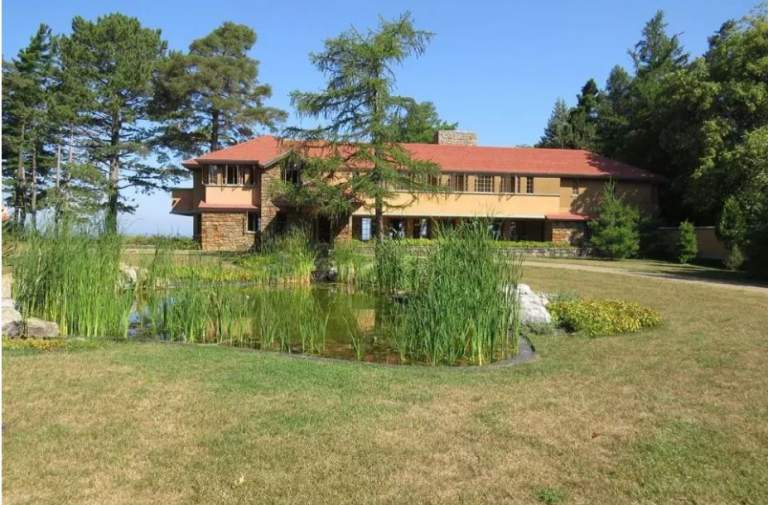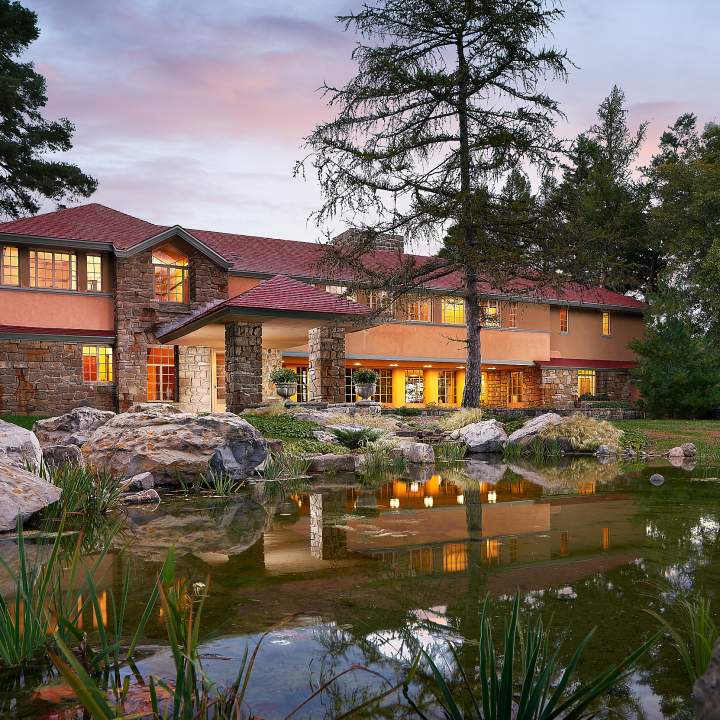September 6, 2017
Wright’s many contributions — including a gas station — celebrated in Buffalo
Master architect Frank Lloyd Wright would have been 150 years old this year on June 8, and all around the country communities with properties designed by him are commemorating his legacy. Sites like Fallingwater in Pennsylvania and Taliesin in Wisconsin often get the lion’s share of the public’s attention, but Wright’s talents and influence show up in many under-the-radar places worth checking out. Buffalo is one such example.
In the 1900s, Wright was commissioned by prominent Buffalo businessman Darwin D. Larkin, who had first seen Wright’s work in Illinois, to design the Larkin Company’s new headquarters building. Martin eventually hired Wright to design other buildings, including his home and a summer house. Over the decades, the office building was demolished and the other properties fell into disrepair.
Fortunately, in the past few decades, there has been a major effort in the city to restore the Martin House Complex and the Graycliff Estate. Perhaps even more poignant are three structures that were built almost 100 years after Wright’s death, a gas station, a boathouse, and a mausoleum. Visitors can easily check out the sites on their own, but a convenient way to tour them all is the special “All Wright, All Day Tour” being offered through October by the Martin House Complex. The $130 guided tour visits the following sites and includes lunch.
Martin House Complex
To say Martin commissioned Wright to build a house is a bit of an understatement. It was really an estate, with multiple interconnected buildings. In addition to the main house, designed in Wright’s signature Prairie House style and completed in 1907, there was a conservatory, carriage house, pergola, the gardener’s cottage and the Barton House (where Martin’s sister and her husband lived). Since 1996, more than $50 million has been spent to return the complex to its glory days, including completely rebuilding the pergola, conservatory, and carriage house, which were demolished in the 1960s. The complex now operates as a museum, and a variety of guided tours are offered. One of the most eye-catching elements, in a house full of them, are the 394 art glass windows, including the Wright’s famous “Tree of Life.”
Graycliff Estate
Built almost two decades later for the Martin family as a second home, Graycliff Estate is about 30 minutes from Buffalo and is perched above the shores of Lake Erie. The three-building estate is classic Wright, with lots of enormous windows, cantilevered balconies, and unusual fireplaces. After the Martins passed away, the building was sold to an order of priests in 1951. They made many alterations over the years and it seemed like no one even remembered it was a Wright-designed house. In 1997, when the priests decided to sell, there was talk of the eight-acre property being turned into condos and the history of the estate was brought to light. A massive grassroots effort resulted in the property being purchased and saved. Since 1997, the nonprofit Graycliff Conservancy has been working to restore it, and even though it’s still a work-in-progress, visitors can take guided tours.
Blue-Sky Mausoleum
Though Martin commissioned Wright to build this mausoleum for him in Buffalo’s Forest Lawn Cemetery and Wright drew up the plans in 1928, the expensive project was shelved when Martin’s fortunes were diminished and he couldn’t afford it. For years, it simply remained just a set of plans until the 1990s, when the president of the cemetery at the time found out about it. He made it his mission to see the project come to light. In a satisfying twist, Anthony Puttnam, an architect who apprenticed under Wright at the beginning of his career, was hired to build it. The mausoleum opened in 2004. Wright’s design for it, like most of his work, was meant to blend in with nature. The granite structure features a series of “steps,” which are actually 24 burial crypts, on a sloping hill leading up to a giant white granite monolith inscribed with a Wright quote.
Frank Lloyd Wright’s Fontana Boathouse
Another of Wright’s designs he never saw built was the boathouse he planned for the University of Wisconsin Boat Club in 1905. He was so proud of it he even included the design in his “Wasmuth Portfolio,” his famous collection of structure illustrations. Almost 100 years later, the Fontana family, avid rowing enthusiasts, created the Lloyd Wright’s Rowing Boathouse Corporation, gained the rights to the design, and raised enough money to have the boathouse built on Buffalo’s Black Rock Canal and the Niagara River in 2007. Used by the West Side Rowing Club, it has to be one of the most unique boathouses in the country. Wright’s design elements can be seen everywhere, from the light fixtures to the windows.
Wright Filling Station
Designed by Wright in the 1927, but never built, his over-the-top gas station was finally constructed to his plans in 2014 as a permanent exhibit in the Buffalo Transportation Pierce-Arrow Museum. The 1,600-square-foot, two-story structure, which Wright intended to be built at the corner of Michigan Avenue and Cherry Street in downtown Buffalo, features a copper roof, not one, but two fireplaces, an observation room, and even a room for the filling station attendant. It’s hard to imagine a gas station with fireplaces not being a safety hazard, but it’s as elegant as any other Wright building.
Kim Foley MacKinnon can be reached at kimfoleymackinnon@gmail.com.
Originally reported by the Boston Globe.

